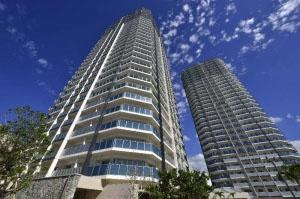Two sides to Tokyo's improving property market
February 13, 2014Real Estate News,Market Information,All,Tokyo

Tokyo's apartment market entered bullish territory in 2013, but 2014 could bring challenges for for some developers.
According to the Real Estate Economic Institute, 56,476 new apartments were released for sale across greater Tokyo in 2013, up 23.8% from 2012 and edging closer to the recent peak of 61,021 apartments released in 2007. The contract rate was 79.5%, up 3.2 points from the previous year (anything over 70% indicates positive market conditions). 56,000 new apartments are expected to hit the market in 2014.Read more
Redevelopment not an option for many apartment buildings
February 12, 2014Buyer Beware!,Property Purchasing Guide,Real Estate News,Redevelopment & Reconstruction,All
 Buying an apartment in an older building may be appealing because you can get more space for your money, but what will happen down the track when the building has reached a point where it needs rebuilding?
Buying an apartment in an older building may be appealing because you can get more space for your money, but what will happen down the track when the building has reached a point where it needs rebuilding?
According to the Ministry of Land, Infrastructure, Transport and Tourism, only 218 apartment buildings nationwide have either been redeveloped or are in the process of doing so. This represents just 0.5% of the 38,000 buildings built before 1981 - the year when the major change to earthquake-resistant building codes was introduced.
So why are there so few examples? Read more
Developer abandons plans for resort in Nagano
February 11, 2014Resort Property,NaganoReal Estate News,All

Haseko Corporation announced on January 14 that they have abandoned their plan to build a resort in the Okutateshina onsen area in Chino City, Nagano Prefecture.
Haseko said the decision was a financial one as the project's profitability was in question. Read more
Residential yields and vacancy rates in Minato-ku - February 2014
February 10, 2014tokyo apartment rentReal Estate News,Rental Market,Market Information,All,Tokyo

According to real estate listing site Homes, the average gross yield on an apartment in Minato-ku in February was 5.4%, down 0.4 points from January. The average gross yield across Tokyo was 7.4%, down 0.1 points the previous month.
Understanding the lifespan of a Japanese home or apartment
February 7, 2014Buying an apartment in Japan,Buying a home in Japan,FeaturedProperty Purchasing Guide,All
 Are second-hand homes really that bad?
Are second-hand homes really that bad?
There is a common opinion in Japan that brand new homes are a safer and less risky purchase than pre-owned ones. But, all old homes were new at one stage. Whether they are new or old, all buildings will deteriorate over the years in some form or another.
The second-hand housing market can be referred to as a 'lemon market'. As described by economic George Akerlof in his 1970 paper 'The Market for Lemons: Quality Uncertainty and the Market Mechanism', there can be good used cars and bad used cars. Similarly, the second-hand housing market may contain well-maintained and cared for homes, but can also contain just as many neglected and defective homes. On the outside, they may all appear the same, but the 'rotten' homes out there destroy buyers' faith in the market and drag prices down.
Strong apartment sales in Okinawa
February 6, 2014OkinawaReal Estate News,Market Information,All

Okinawa is seeing high demand for new apartments, with real estate agents reporting properties being sold without any marketing and a severe shortage in stock levels.
All 338 apartment in Ryu:X West Tower in Omoromachi, Naha City, have sold out, and 90% of the apartments offered for sale in the East tower are already under contract. The two 30-storey towers contain 676 apartments. The West Tower was completed in September 2013 and the East Tower will be completed in 2015.Read more
Nippon Life acquires site in Minato-ku for 80 billion Yen
February 5, 2014New Construction,Office/Retail News & Information,Real Estate News,Redevelopment & Reconstruction,All,Tokyo
Nippon Life Insurance Company has acquired a 7205 sqm development site in front of Hamamatsucho Station for approximately 80 billion Yen (790 million USD). The seller was bus company Kokusai Kogyo. The sale price works out to around 11.1 million Yen/sqm (109,000 USD). Read more
